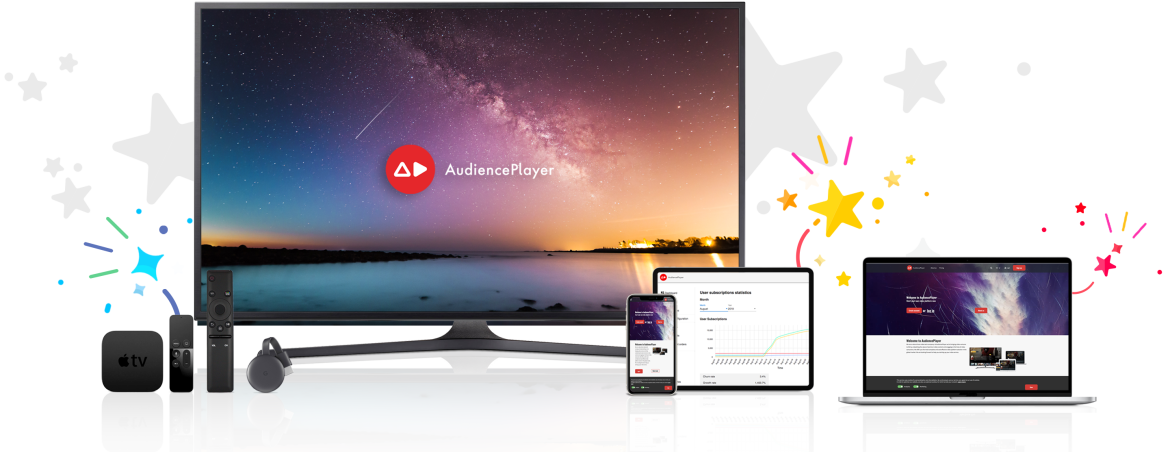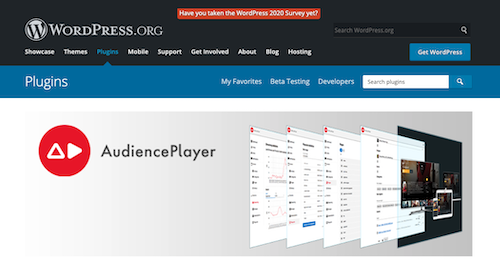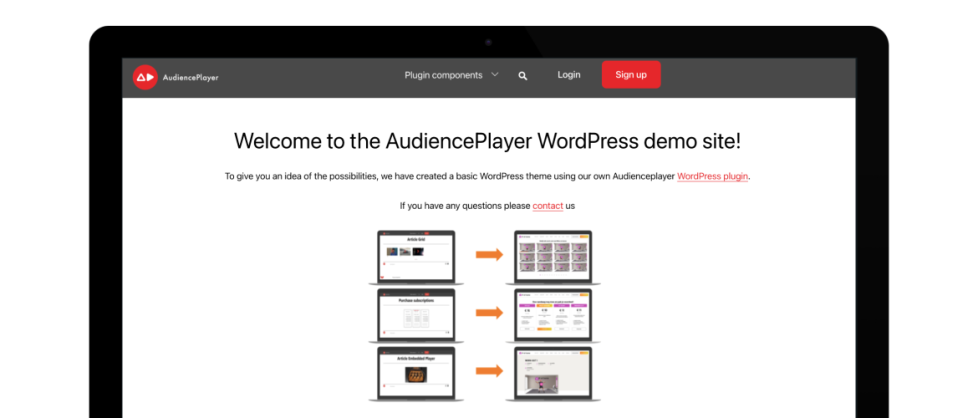How do you create your own video streaming platform? In order to answer this, you must first understand which building blocks a streaming video website consists of. In this blog we describe the 6 most important building blocks with which video platforms are generally built.
Your own video platform is an interesting alternative to YouTube. You can then set up your revenue model yourself and increase your turnover considerably. Consumers like to pay for online videos, according to our data. You can read more about this in our blog about how to sell videos online.
Are you looking for a simple white label solution with which you can create a streaming video website yourself? Then the AudiencePlayer team will be happy to help you. With AudiencePlayer you can easily set up your own video streaming website and you can even expand to mobile apps and smart TV apps. Take a look at our white label demo page, you will get a first impression of the possibilities.

The following topics are covered in this blog:
- Storage of videos
- Encoding of videos
- Stream worldwide with CDN
- Choose a player
- Create your own video streaming platform
- Account registration and payments
Let’s dive in quickly …
Storage of videos
First of all, you must store your videos on a server from which they can be streamed. You can use your own server that you maybe have at home. Only if your videos are suddenly viewed a lot more, you will need more server space. Online cloud services are designed for this as standard. Examples of such cloud services are Microsoft Azure or Amazon. They have huge spaces worldwide with servers that you can use and scale with.
Encoding of videos
If your videos are stored online, make sure they are made suitable for different screens and devices. We also call this process encoding. Your videos will be saved in different resolutions through this process. As a result, users always watch your videos in high quality because they are played on every screen with a suitable resolution.
If you are not technical you can also use popular video platforms such as YouTube. These platforms do the entire encoding for you by default. However, you are then bound by the conditions of these platforms. Depending on your objective, this may be a disadvantage. If you are not afraid of technology and you want to figure it out yourself, you can use the aforementioned cloud services Microsoft Azure or Amazon for this. These services have already built standard software for this that you can use for further development.
Stream worldwide with CDN
If you want to reach the whole world with your videos, then it is smart to use a CDN (Content Delivery Network). This is a network of servers that are connected to each other throughout the world. The advantage of a CDN is that your videos do not have to be streamed from your server to an end point every time. The servers in the network remember (cache) your video files and stream this file to the end user. There are several companies that offer a CDN. Examples are Akamai and Verizon.
Choose a player
The next step is that your users should be able to play the videos. In other words, you need a video player. If you are not technical, you can use YouTube for this. This video platform offers a standard player that you can embed in your website with a code. Keep in mind that if you choose this setup, visitors can easily navigate away from your website to YouTube. By the way, YouTube stores your videos on their servers by default. YouTube also has its own CDN agreements, so you don’t have to look any further.
If you do not want this, there are various commercial or open source players available that you can use. An example of an open source Player is VideoJS. If you are going to do this, keep in mind that your player supports subtitles, different audio tracks and DRM. This is especially important if you want to securely stream videos worldwide.
Create your own video streaming platform
Now that your entire video streaming flow has been built, it’s time to start creating your website. You can choose different options for this. You can use an all-in-one video platform solution like AudiencePlayer. You can also choose to use open source software. The most well-known open source software for building a website is WordPress.
AudiencePlayer also offers a WordPress plugin with which you no longer have to think about storage, streaming, encoding, CDNs and players. These building blocks are all integrated in the plugin. Whatever you choose, make sure you can embed the video player in your web pages.

Account registration and payments
Now that your video streaming platform is up, you might want your visitors to be able to create an account or make a payment. You can link to that with a payment gateway, such as Mollie or Adyen. You must also be able to actually allow or deny access to the content (eg DRM). In short, you will have to create conditions.
Do you want to create your own streaming video website with a higher online revenue as an important goal? Then make sure you prepare well. After all, good preparation is half the battle. In our blog about how to sell videos online, we explain in 7 steps how you can earn a lot more money.
Hopefully, after reading this blog, you have gained a little more knowledge about building a video website. Do you still find it too complex or are you not very interested in technology, but do you want to start your own video platform? Please do not hesitate to contact us. We are happy to help you!





